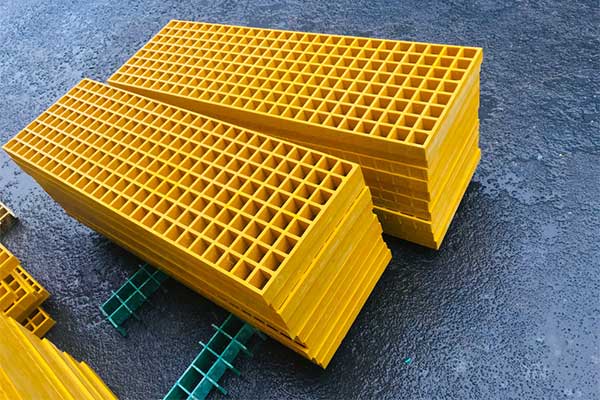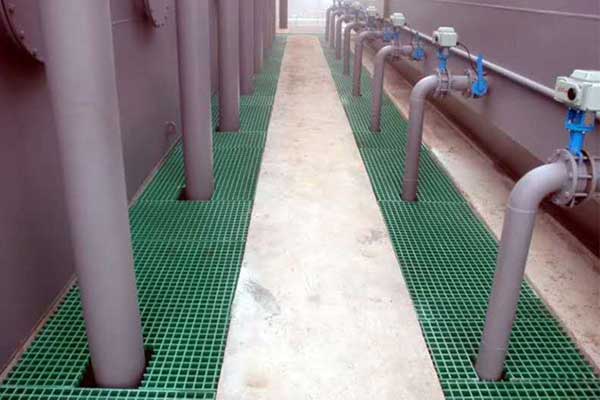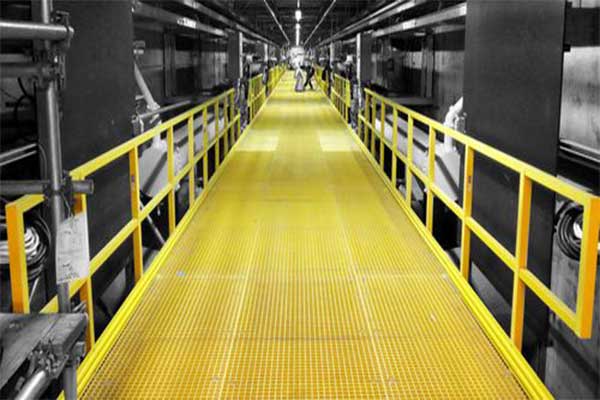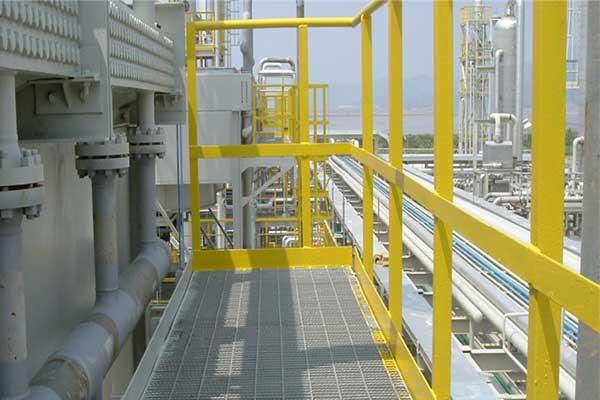Fiberglass floor grating is a type of flooring material that is made from fiberglass-reinforced plastic (FRP) resin. It is a cost-effective alternative to traditional materials such as steel, concrete, and wood, and it has become increasingly popular in recent years due to its numerous benefits. In this essay, we will discuss the features, benefits, and applications of fiberglass floor grating.

Features of Fiberglass Floor Grating
- Fiberglass floor grating is made by molding fiberglass-reinforced plastic resin into a grid-like pattern. The process results in a strong, lightweight, and corrosion-resistant material that is ideal for flooring applications. One of the key features of fiberglass floor grating is its high strength-to-weight ratio, which makes it much lighter and easier to handle than steel or concrete flooring. This not only makes it easier to install but also reduces the load on the building structure, which can be important in older or weakened buildings.
- Another key feature of fiberglass floor grating is its non-corrosive and non-conductive nature. Unlike steel or metal flooring, fiberglass floor grating does not rust, rot, or deteriorate over time, making it a more durable and long-lasting option for flooring applications. Additionally, its non-conductive nature makes it ideal for use in electrically sensitive areas, as it does not conduct electricity, reducing the risk of electrical shocks and electrical fires.
Benefits of Fiberglass Floor Grating
- Low maintenance requirements: Unlike steel or concrete flooring, fiberglass floor grating does not require painting, rust inhibitors, or other maintenance measures. This not only reduces maintenance costs but also reduces the amount of time and effort required to keep the flooring in good condition.
- Slip-resistant surface: The surface of fiberglass floor grating is molded with a slip-resistant surface, which makes it ideal for use in wet or slippery areas, such as around swimming pools, showers, or in industrial settings where there is the potential for spills or dripping.
- Fire-resistant and self-extinguishing: This makes it ideal for use in areas where there is a risk of fire, as it will not contribute to the spread of the fire. This can help to reduce the risk of injury and damage in the event of a fire.



Applications of Fiberglass Floor Grating
- Industrial settings: Fiberglass floor grating is commonly used in industrial settings, such as factories, warehouses, and workshops, due to its high strength, durability, and resistance to corrosion.
- Commercial settings: Fiberglass floor grating is also used in commercial settings, such as shopping centers, offices, and other public buildings. Its slip-resistant surface makes it ideal for use in areas with high foot traffic, and its fire-resistant nature makes it a safer option for public buildings.
- Residential settings: Fiberglass floor grating is also used in residential settings, such as homes, apartments, and other residential buildings. Its low maintenance requirements and slip-resistant surface make it a popular choice for use in bathrooms, kitchens, and other areas where there is a risk of moisture or slipping.
In conclusion, fiberglass floor grating is a versatile and high-strength composite material that is ideal for use in various industrial and commercial applications. It is resistant to corrosion, fire, and chemicals, and it provides a safe and slip-resistant walking surface. It is easy to install, low maintenance, and environmentally friendly, making it a cost-effective and sustainable alternative to traditional flooring materials. Whether you need a flooring solution for a chemical processing plant, oil refinery, or food processing facility, fiberglass floor grating is a reliable and long-lasting option that will meet your needs.




























